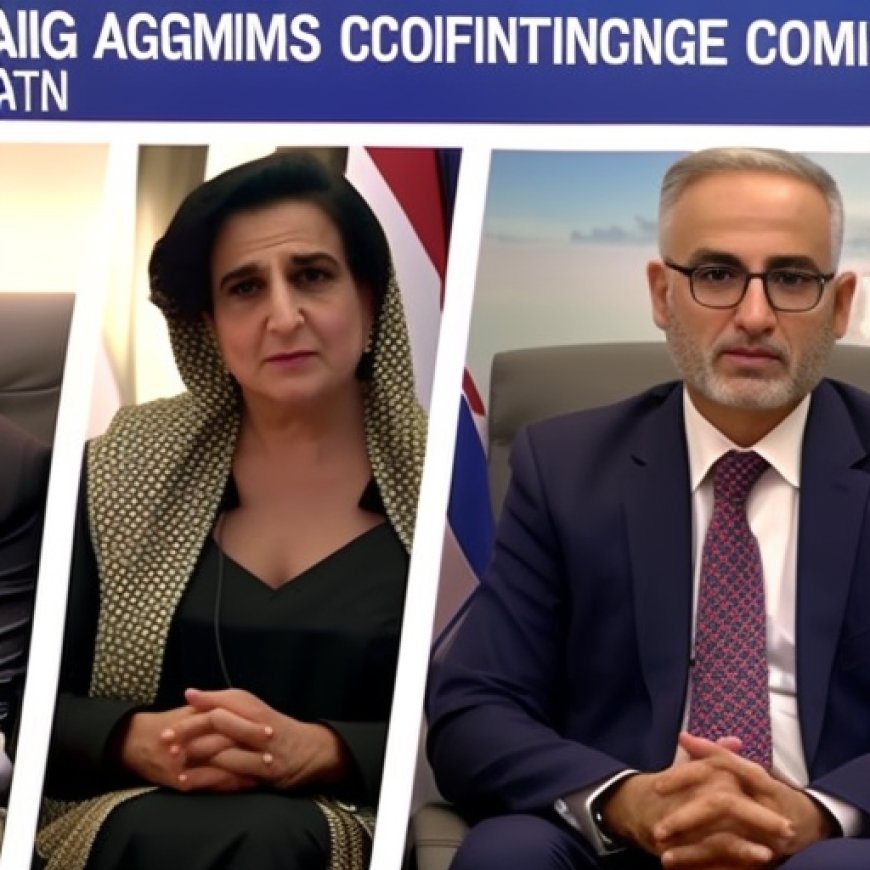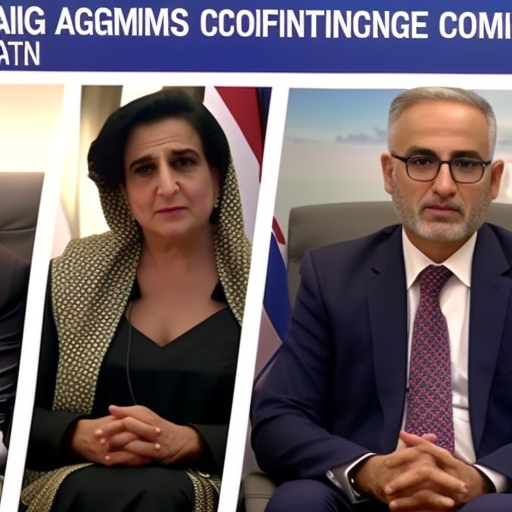Crimes Against Humanity in Afghanistan with a Gender Lens: Strengthening Global Coordination (CSW68 Side Event)
Crimes Against Humanity in Afghanistan with a Gender Lens: Strengthening Global Coordination (CSW68 Side Event) Welcome to the United Nations


Summary
Since the Taliban’s seizure of power in 2021, women and girls in Afghanistan have been subjected to severe repression of their rights and freedoms, which UN experts, legal scholars and activists agree amounts to a system of apartheid to deliberately subjugate them on the basis of gender.
Sustainable Development Goals (SDGs)
- Goal 5: Gender Equality
- Goal 16: Peace, Justice and Strong Institutions
Introduction
The Taliban’s takeover of Afghanistan in 2021 has had devastating consequences for women and girls in the country. Their rights and freedoms have been severely repressed, leading to widespread concerns about gender inequality and human rights violations. This report will analyze the situation in Afghanistan through the lens of the Sustainable Development Goals (SDGs), with a particular focus on Goal 5: Gender Equality and Goal 16: Peace, Justice and Strong Institutions.
Gender Equality (SDG 5)
SDG 5 aims to achieve gender equality and empower all women and girls. However, the Taliban’s rule in Afghanistan has resulted in a significant setback for gender equality in the country. Women and girls are being denied access to education, employment, healthcare, and political participation. They are also facing widespread violence and discrimination based on their gender.
- Women’s Rights: The Taliban’s interpretation of Islamic law restricts women’s rights and freedoms. They are required to cover themselves from head to toe, are not allowed to leave their homes without a male guardian, and are prohibited from working in certain professions.
- Education: Girls’ education has been severely impacted since the Taliban’s takeover. Many schools for girls have been closed, and those that remain open face constant threats and attacks. This denies girls the opportunity to receive an education and hinders their future prospects.
- Healthcare: Women and girls are facing limited access to healthcare services, including reproductive health services. This puts their health and well-being at risk and undermines their ability to make informed decisions about their bodies and lives.
Peace, Justice and Strong Institutions (SDG 16)
SDG 16 focuses on promoting peaceful and inclusive societies, providing access to justice for all, and building effective, accountable, and inclusive institutions. However, the Taliban’s rule in Afghanistan has resulted in a breakdown of peace, justice, and strong institutions.
- Violence and Discrimination: Women and girls in Afghanistan are facing widespread violence and discrimination. They are subjected to physical, sexual, and psychological abuse, forced marriages, and honor killings. The justice system is failing to protect their rights and hold perpetrators accountable.
- Political Participation: Women’s political participation has been severely curtailed under the Taliban’s rule. They are being excluded from decision-making processes and are unable to exercise their right to participate in public affairs.
- Human Rights: The Taliban’s treatment of women and girls violates fundamental human rights principles. Their actions undermine the principles of equality, non-discrimination, and freedom of expression.
Conclusion
The situation for women and girls in Afghanistan under the Taliban’s rule is dire. Their rights and freedoms are being systematically repressed, amounting to a system of apartheid based on gender. This violates the principles of the Sustainable Development Goals, particularly Goal 5: Gender Equality and Goal 16: Peace, Justice and Strong Institutions. Urgent action is needed to address this crisis and ensure the protection and empowerment of women and girls in Afghanistan.
SDGs, Targets, and Indicators
1. SDGs addressed or connected to the issues highlighted in the article:
- SDG 5: Gender Equality
- SDG 16: Peace, Justice, and Strong Institutions
2. Specific targets under those SDGs based on the article’s content:
- SDG 5.1: End all forms of discrimination against all women and girls everywhere
- SDG 5.2: Eliminate all forms of violence against all women and girls in public and private spheres
- SDG 16.3: Promote the rule of law at the national and international levels and ensure equal access to justice for all
3. Indicators mentioned or implied in the article to measure progress towards the identified targets:
- Indicator for SDG 5.1: Proportion of women and girls subjected to discrimination or violence based on gender
- Indicator for SDG 5.2: Number of reported cases of violence against women and girls
- Indicator for SDG 16.3: Access to justice for women and girls in Afghanistan
4. Table presenting the findings:
| SDGs | Targets | Indicators |
|---|---|---|
| SDG 5: Gender Equality | Target 5.1: End all forms of discrimination against all women and girls everywhere | Proportion of women and girls subjected to discrimination or violence based on gender |
| SDG 5: Gender Equality | Target 5.2: Eliminate all forms of violence against all women and girls in public and private spheres | Number of reported cases of violence against women and girls |
| SDG 16: Peace, Justice, and Strong Institutions | Target 16.3: Promote the rule of law at the national and international levels and ensure equal access to justice for all | Access to justice for women and girls in Afghanistan |
The article highlights the severe repression of women and girls’ rights and freedoms in Afghanistan since the Taliban’s seizure of power. This connects to SDG 5: Gender Equality, which aims to end discrimination and violence against women and girls. The specific targets identified from the article are SDG 5.1 (ending all forms of discrimination) and SDG 5.2 (eliminating all forms of violence). The indicators mentioned or implied in the article include the proportion of women and girls subjected to discrimination or violence (for SDG 5.1), the number of reported cases of violence against women and girls (for SDG 5.2), and access to justice for women and girls in Afghanistan (for SDG 16.3).
Behold! This splendid article springs forth from the wellspring of knowledge, shaped by a wondrous proprietary AI technology that delved into a vast ocean of data, illuminating the path towards the Sustainable Development Goals. Remember that all rights are reserved by SDG Investors LLC, empowering us to champion progress together.
Source: webtv.un.org

Join us, as fellow seekers of change, on a transformative journey at https://sdgtalks.ai/welcome, where you can become a member and actively contribute to shaping a brighter future.







